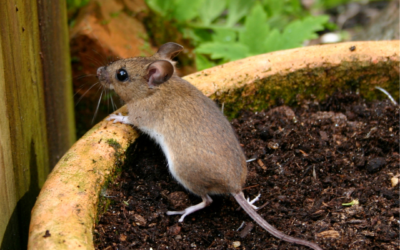Raccoons are mammals that belong to the Procyonidae family. These pests are omnivorous scavengers, and they are not afraid to venture out of their homes for food. Their omnivorous tendencies allow them to eat anything in sight, whether it be other small animals or trash. Furthermore, they are nocturnal, so they do most of their damage at night. These habits combine to form a very reckless pest that can be incredibly difficult to deal with. In a matter of minutes, your property could be seriously damaged if the furry culprit is hungry enough. Raccoons are small but mighty, so it is important that you avoid them at all costs.
What attracts raccoons to your home?
Raccoons are very similar to humans in that they have three basic needs: water, shelter, and food. Inconveniently, your home provides all three. The mere existence of your home provides intrigue for these pests. However, there are some things that you might have at your home that unknowingly attract these menaces.
The first magnet that might be luring raccoons to your home is a lack of light around the exterior of your property. Raccoons, like most nocturnal creatures, try to avoid light. They would rather target a home that is encompassed in darkness than one surrounded by light. If your home is shrouded in shadows, a raccoon will likely be more comfortable feasting at your dumpsters. An easy way to alleviate this problem is to install motion-activated lights on the outside of your home. As soon as these pests come near your property, the lights will turn on and scare them away. As much as raccoons love food, they hate the spotlight more.
The lack of a pet can also be very appealing for raccoons. Properties that don’t have pets are likely to have a raccoon infestation because the creature won’t be intimidated. Raccoons are normally prey, so if they see a larger animal in your backyard, they will likely stay away. Even a small dog will repel them. If you don’t have your own pet, the sound of a nearby bark might be enough to do the trick. Raccoons will flee as soon as they see a larger competitor. Ironically, raccoons are all bark and no bite.
How can you keep raccoons away from your property?
As mentioned above, raccoons will eat pretty much everything. These animals are fueled by the prospect of food, so if they see an opportunity to eat, they’ll take it. Yards are a buffet for these critters, and by taking away all their prospects, you can likely avoid them completely.
The primary source of food for these pests is unattended dumpsters. Raccoons can scale heights up to approximately forty feet, so your dumpster is a small feat. They will climb into your dumpster and shred your trash bags to get into days-old leftovers. The easiest way to avoid dumpster infestation is to ensure that all of your bags are neatly tied shut and that the dumpster lid is closed tightly. If you have excess trash bags in your dumpster, remove some bags, and keep them safely tucked away for the next trash day.
As we discussed above, pets are a great way to repel raccoons. However, pet food actually attracts them to your home. If you leave dog food or bird seed unattended outside, you’re likely to have a hungry raccoon at your doorstep. Raccoons will climb any structure to get to the food, so if you think your fence will keep them out, think again! The best way to prevent raccoons from skulking around your home is to keep all dog food and birdseed in closed containers. That way, the smell of these potential snacks is contained. Overall, it is best to keep a close eye on your property.
What are some signs that a raccoon has infested your home?
Raccoons will take almost any opportunity to get into your home. They will infiltrate your dwelling and begin their destruction very quickly. Because of their swiftness, it is important that you be educated on some signs that they might be inside your property.
As mentioned above, the most obvious sign is ravaged trash bins. Another way to tell if a raccoon has been around is by its tracks. Raccoon tracks look similar to a human hand, but they are much smaller. This mammal is one of few creatures to have a print like this, so identification is somewhat easy.
Furthermore, exterior scratches and holes are great indicators of a raccoon’s infiltration. The holes that it makes are their doorway into your home. If you hear scuffling in your attic or walls, there is a good chance that a raccoon is dwelling inside.
Why are raccoons dangerous?
Raccoons, like most mammals, are wild, and they are not meant to live inside your home. If they are within your home, they can cause interior damage and sickness to those living inside. Raccoons and their droppings carry diseases, which could easily be transferred to humans via the air we breathe. Because of this, it is important to remove raccoons from the walls or attic of your home immediately in hopes of avoiding damage and illness.
Raccoons are seriously destructive, and they must be dealt with quickly. But their nocturnal tendencies make it difficult for people to catch and safely remove them alone. If you are experiencing a raccoon takeover, it is essential that you have them removed as soon as possible. Sign up for a free inspection. Our professionals can remove these pesky critters for good!




